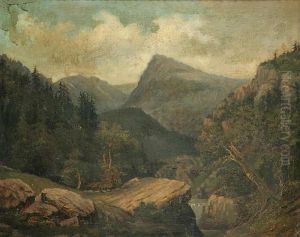





Tonglou from an account of a Dutch Embassy to China 1665
-
About Reproduction
Discover the allure of art with our faithful reproduction of "Tonglou from an account of a Dutch Embassy to China 1665", originally brought to life by the talented Jacob van Meurs. Unlike posters or prints, our hand-painted oil painting breathes an unique sense of depth and texture into your space. Every detail, every stroke, and every texture is meticulously recreated, paying the perfect homage to Jacob van Meurs and his artistic vision.
Owning this piece is more than just decoration - it's a statement of your refined taste in art. Let the vibrant colors and intricate details of this replica serve as a daily reminder of the beauty in our world. Elevate your decor and appreciate the richness of art with our replica of this masterpiece.
-
Painting Description
Jacob van Meurs, a notable 17th-century Dutch engraver and publisher, is renowned for his detailed and vivid illustrations that accompanied various travel accounts and historical works. One of his significant contributions is the account of the Dutch Embassy to China in 1665, which provides a fascinating glimpse into the interactions between the Dutch East India Company and the Qing Dynasty. This work is particularly valuable for its detailed depictions of Chinese architecture, culture, and society during the early Qing period.
The account includes a description of the Tonglou, a distinctive form of Chinese architecture. Tonglou, often referred to as "tulou" in modern terminology, are large, fortified earthen buildings primarily found in the Fujian province of China. These structures were designed to house multiple families and serve as communal living spaces, providing both residential and defensive functions. The Tonglou are characterized by their circular or rectangular shapes, thick earthen walls, and central courtyards, which foster a sense of community among the inhabitants.
Van Meurs' illustrations and descriptions of the Tonglou offer a rare and valuable perspective on these unique architectural forms, which were relatively unknown in the West at the time. His work captures the intricate details of the construction, the layout of the living spaces, and the daily activities of the residents, providing a comprehensive overview of life within these remarkable structures.
The account of the Dutch Embassy to China in 1665 by Jacob van Meurs is not only an important historical document but also a testament to the rich cultural exchanges that took place between Europe and China during the 17th century. Through his meticulous engravings and detailed descriptions, van Meurs has left an enduring legacy that continues to inform and inspire scholars, historians, and enthusiasts of Chinese architecture and culture.
-
Lead Time & Shipping
When you order this oil painting replica, it typically takes 2-3 weeks to paint. If the artwork is more complex, it might need a little more time to ensure the best quality. Once it's ready, we'll send you a photo for your approval. After you give the green light, we'll ship it to you for free.
-
Return & Refund
We believe in the quality of our hand-painted oil painting reproductions, and your satisfaction is our priority. If for any reason, you are not completely satisfied with your purchase, we offer a 45-day return policy. You can return your artwork within 45 days of receipt and receive a full refund. Please note that the artwork must be returned in the original packaging and in the same condition as it was received.




















